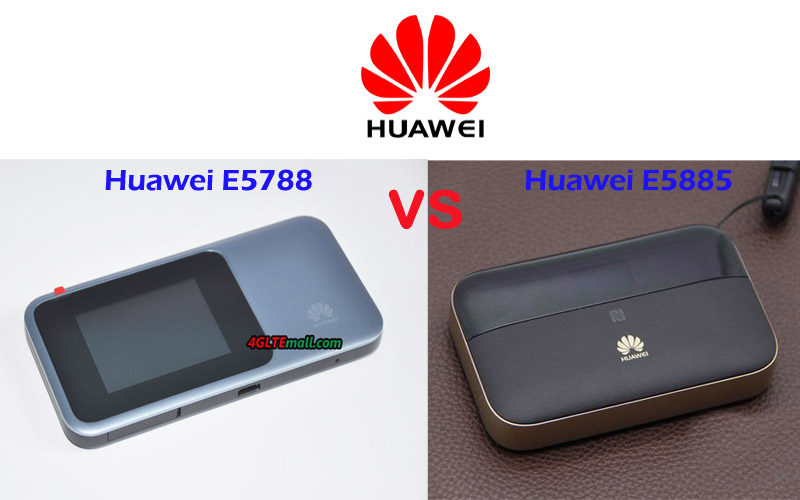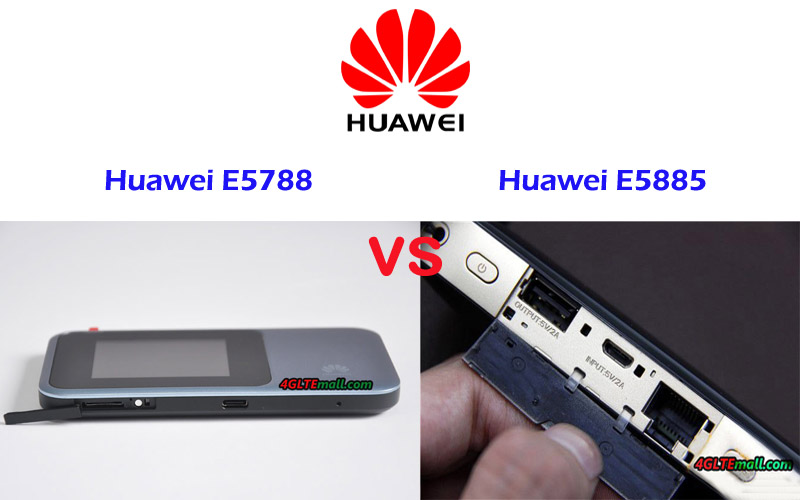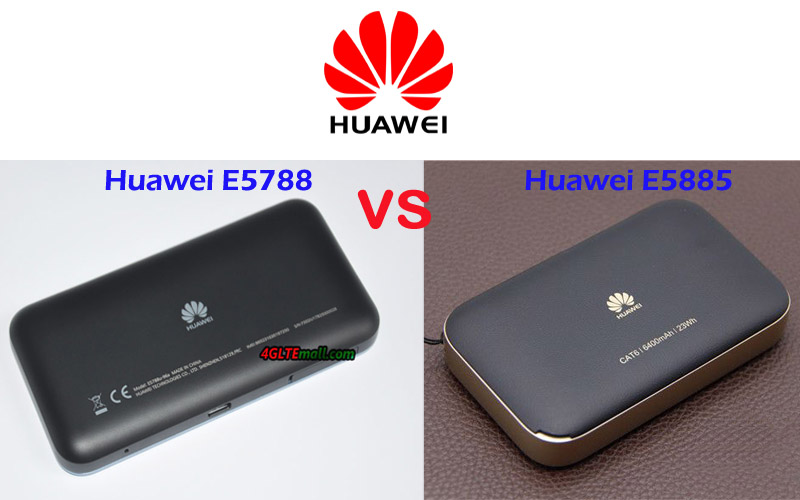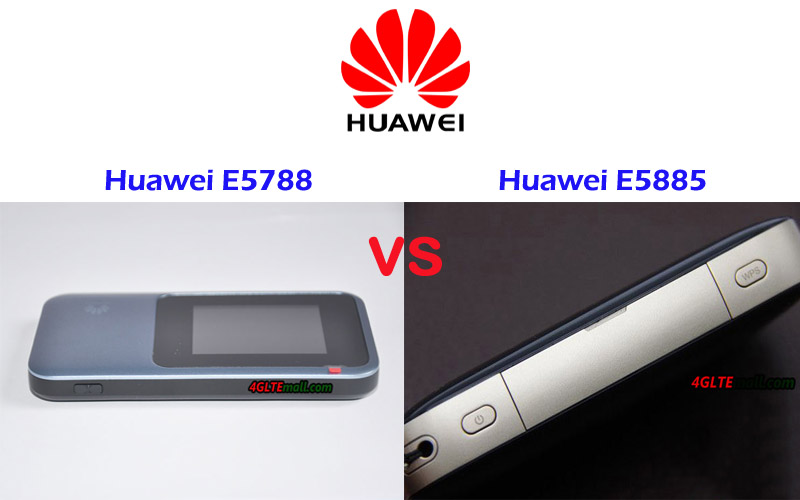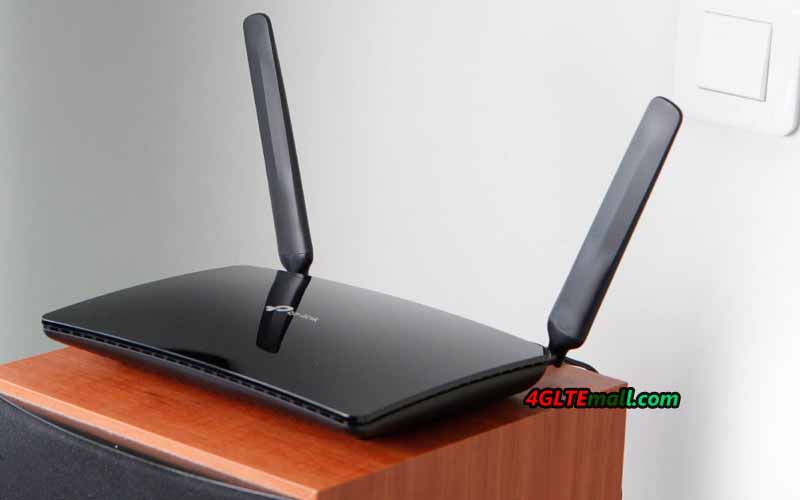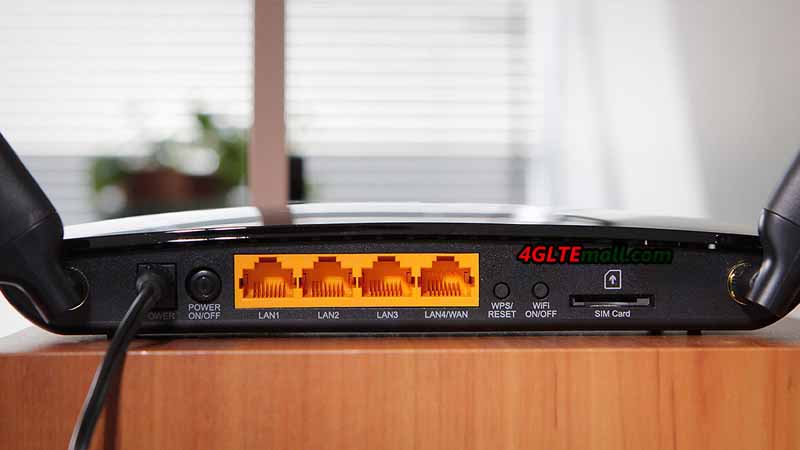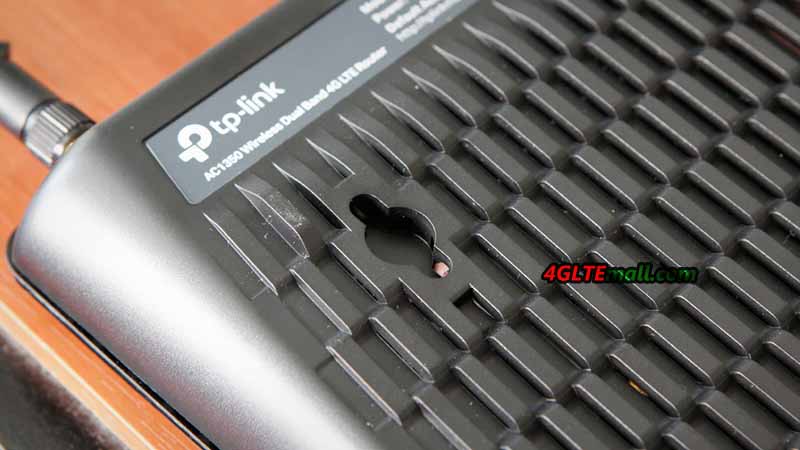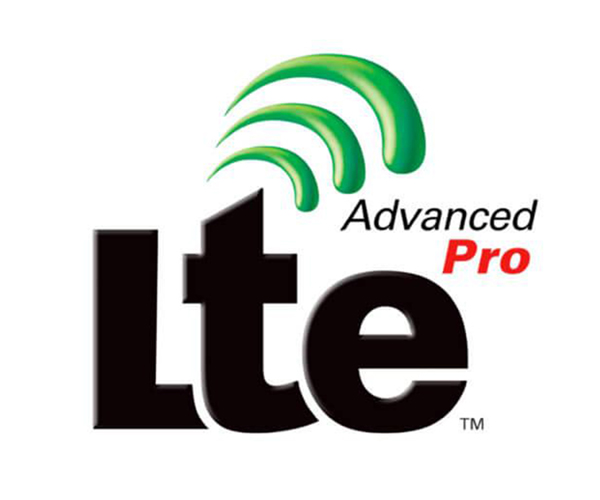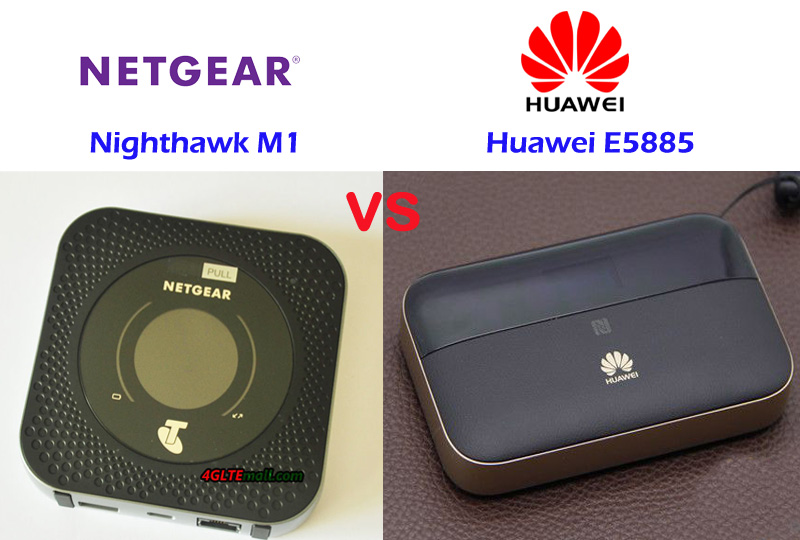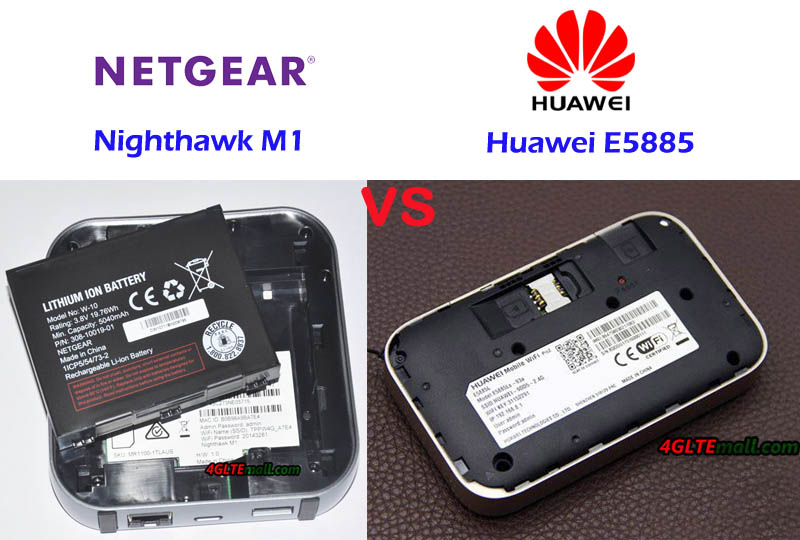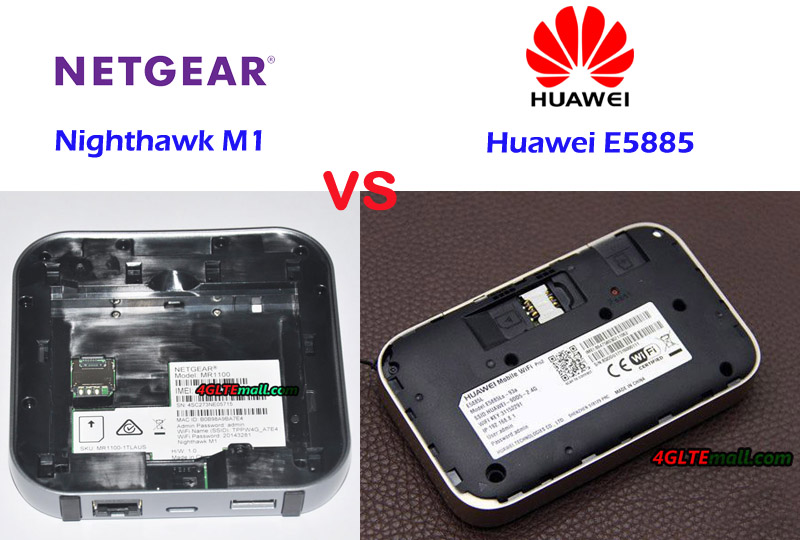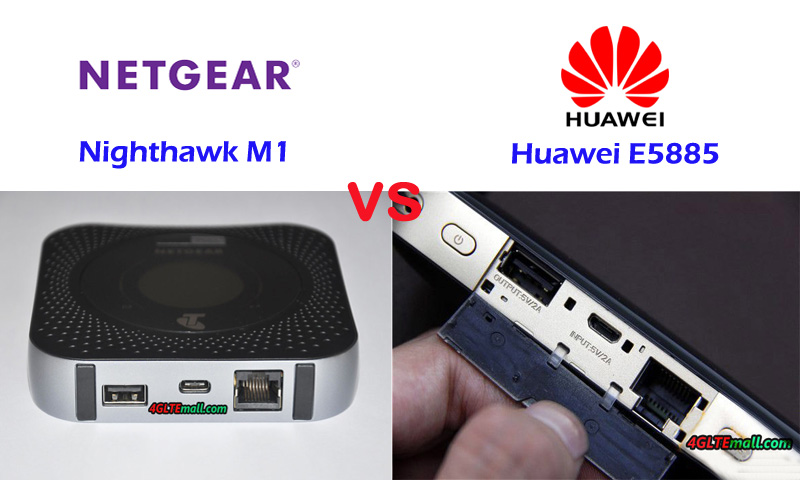-
[PR]
×
[PR]上記の広告は3ヶ月以上新規記事投稿のないブログに表示されています。新しい記事を書く事で広告が消えます。
-
Huawei E5885Ls-93a VS Huawei E5788u-96a
More and more Huawei LTE advanced mobile routers are available in the market now. Many customers are not satisfied with the basic LTE and want to get higher LTE speeds. So they must get LTE advanced or LTE-A pro router to fulfill that. Huawei E5788 and E5885 are the two hot new models in the Huawei E5 MiFi family. For those who want to buy one from the two mobile hotspots, they may ask: What’s the difference between the Huawei E5885 and E5788? And which one is better? We will review the appearance, interfaces, specs, and other features to find the answers.
Huawei E5885 VS E5788 Appearance and interfaces
Huawei E5788 is the latest Huawei LTE advanced pro mobile 4G router with a touch screen. Comparing with its predecessors, Huawei E5788 is thinner and has better hand feel. The power button is on the top edge side while the USB 3.0 port and SIM card slot are on the opposite side. We can’t find the connector for an external antenna, which is the standard configuration in other Huawei E5 mobile hotspots such as E5787 and E5786. The backcover of Huawei E5788 can’t be removed and the battery is built-in and non-removable.
The Huawei Mobile WiFi Pro 2 E5885 is also the latest new LTE-A mobile router. The typical feature is that it has one Ethernet port and USB input and output interfaces. There is only one small screen on the front to show the connection status. The power button and WPS are located at the two sides of the interfaces. Similarly, the Huawei E5885 also has no connector for external antenna. The Huawei E5885 is thicker than the normal Huawei E5 pocket WiFi hotspots. The battery of Huawei E5885 is also non-removable; however, the backcover can be removed. Huawei E5885 and E5788 both use Micro SIM size. The Huawei E5885 has the slot for Micro SD storage but E5788 has not.
Huawei E5788 VS E5885 Specs and features
From the appearance and interface, we can see the Huawei E5788 and E5885 are very different. Then let’s have a look at the technical specifications and features, which is the key difference:
Model Huawei E5885Ls-93a Huawei E5788u-96a Product type LTE Mobile Hotspot with Ethernet port LTE Mobile Hotspot Category LTE Cat.6 LTE Cat.16 Chipset Hisilicon LTE Cat6 chipset Qualcomm MDM9250 Data rates DL 300Mbps/UL 50Mbps DL 1Gbps/UL 100Mbps Supported 4G LTE frequency bands * FDD-LTE Band 1/2/3/4/5/7/8/19/20/19 * TDD-LTE: Band 38/40/41 * FDD-LTE: Band 1/2/3/4/5/7/8/19/20/28 * TDD-LTE: Band 38/40/41/42 WLAN 802.11a/b/g/n/ac, dual-band 2.4GHz & 5GHz 802.11a/b/g/n/ac, dual-band 2.4GHz & 5GHz Max support users 32 users 32 users MIMO 2 X 2 MIMO 4 X 4 MIMO Connector for external antenna No connector No connector Buy Antenna N/A N/A App management Huawei Hilink APP 3.0 Huawei Hilink APP SIM type Micro SIM Micro SIM Battery Non-removable, 6400mAh Non-removable, 3000mAh Dimensions 112.00 x 69.20 x 23.00mm 129 x 65 x 13.5mm Ethernet Port On port for WAN/LAN port(RJ-45) No Datasheet download Huawei E5885 Datasheet Huawei E5788 Datasheet User Manual Huawei E5885 User Guide Huawei E5788u-96a Manual Other features Power bank, CA, NFC 4CC CA Reviews Huawei E5885 Review Huawei E5788u-96a Review Price 249.00USD 499.00USD Summary
From the specs, the Huawei E5788 is more advanced with the support of LTE advanced Pro technologies, such as 4 x 4 MIMO and 4CC CA. And Huawei E5788 supports more LTE frequency bands, which make it could be used more widely. The highlight of Huawei E5788 LTE router should be the data transmission speed, it can reach peak download speed up to 1Gigabit/s, which is three times faster than that of Huawei E5885. The advanced features make the Huawei E5788 hotspot price expensive.
As a new LTE-A mobile hotspot, Huawei E5885 could achieve download speed to 300mbps. They both support maximum users up to 32 devices. In most case, the Huawei E5885 is good enough for our daily lives. The highlight of Huawei E5885 is the Ethernet port, which is for WAN & LAN and provides more options for internet connection. What’s more, the large battery of Huawei E5885Ls-93a can make it work like a power bank to charge other devices. So the Huawei E5885 has more powerful functions than E5788. And the Huawei E5885 is in a cheaper price than E5788. If you just need a mobile hotspot supporting much faster speed, there is no doubt the Huawei E5788 is the right one. If you want to get a practical and powerful pocket WiFi, then Huawei E5885 would be the right one.
Sourcing from https://www.4gltemall.com/blog/huawei-e5885ls-93a-vs-huawei-e5788u-96a/
PR -
Netgear Nighthawk M1 Mobile LTE Router Review
The Netgear Nighthawk M1 is a mobile LTE router designed to provide other devices fast Internet access. In addition, it offers some interesting features, which we will explain in the following article in more detail.

Nighthawk M1 Overview
If you also want to use the Internet on your notebook or tablet while traveling, you either need a device with a SIM card slot or use your smartphone as a hotspot, or you can get a mobile router like the Netgear Nighthawk M1. The small router uses the LTE network and is designed to allow mobile Internet access for devices without LTE modem.
Technical specifications
WLAN standard
WLAN 802.11 b / g / n 2.4 GHz; WLAN 802.11 a / n / ac 5 GHz
MIMO
4 × 4 MIMO
Frequency bands
LTE CAT. 16, LTE Advanced 4-band CA.
Up to 4X Carrier Aggregation
LTE / 4G 700/800/900/1800/2100/2300/2500/2600 MHz
3G 850/900/1900/2100 MHz
Chipset
Qualcomm MDM9x50
Connections
1x Ethernet, 1x USB Type A, 1x USB Type C
Dimensions
105.5 x 105.5 x 20.35 mm
Weight
240 g
Package Content
- Netgear Nighthawk M1
- Replaceable lithium-ion battery (Li-ion)
- AC charger and USB cable type C
- Quick start Guide

Design & Features
The Netgear Nighthawk M1 measures 105.5 x 105.5 x 20.35 millimeters and is therefore small enough to go through as a mobile router. The case is made of plastic, with battery; the router brings a weight of 240 grams. On the top there is a circular screen that provides information about data usage, number of connected devices, connection status and battery level. The upper plastic frame contains the power button, which is also used to navigate through the various displays on the screen.
The ports are integrated into the lower part of the frame, including an Ethernet port and a USB Type A and Type C port. Both USB ports allow you to connect external media to share the files on the network of the Nighthawk M1. The Type C connector is also used to charge the battery, whereas the Type A connector can charge other mobile devices. The connectors are flanked by TS-9 connectors for optional 4G/3G antennas. When not in use, the connections are protected by a cover.
The back cover can be removed to expose the replaceable 5.040 mAh battery. Below the battery is the slot for a micro SIM card. The test also worked well with a Nano SIM card, as long as it is correctly positioned on the contact points. A microSD card slot is also included, which can be used, for example, to stream movies or other files through the Netgear Nighthawk M1.
The interior is simple and can be completed in a few minutes. In the first step, a device (notebook, smartphone, tablet) must connect to the Netgear Nighthawk M1 via WLAN. The network name and key can be found on the screen of the router. Thereafter, the control access takes place on mobile devices, at best via the Netgear Mobile App and on PCs and notebooks via the web browser.
Accessing the Nighthawk M1 requires entering a username and password that can be set at first login. Subsequently, only the SIM card must be unlocked by PIN and the router is ready for use. Versatile settings can be made in the app or web interface, such as whether the router is to build a 2.4 GHz and 5 GHz WLAN or instead only one network should be active. In addition, the SSID and the password can be changed or a monthly consumption overview including data limit can be set up. Owners of an Arlo home security system are pleased to use the Nighthawk M1 as a base station for the Arlo cameras.

We tested the Netgear Nighthawk M1 in Vodafone LTE network. Since Gigabit LTE is only offered in a few German cities so far, we could only check how the mobile router beats in the "normal" LTE network. A Samsung Galaxy S9 connected via Wi-Fi to the router achieved 39.6 Mbps in the upload and 57.3 Mbps in the download. When we ran the speed test on a Dell XPS 13 (9360), the speed was increased to 104 Mbps in the download. The upload value was at 47.9 Mbit/s. For comparison, we ran the speed test with the same SIM card in the Galaxy S9. This could reach 85.4 Mbit/s in the download and 33.4 Mbit/s in the upload.

The Netgear Nighthawk M1 is ideal for use as a media server with its USB ports and microSD card slot. In the test, a UHD video could easily be streamed to the Galaxy S9. Only when fast-forwarding, the buffer had to be recharged, which has led to a few seconds of waiting time. For Full HD videos, streaming was possible with up to three devices simultaneously.
Conclusion
The Netgear Nighthawk M1 is the ideal companion for those who need an Internet connection on the go. In the LTE network, the mobile router provides other devices such as notebooks or tablets with fast Internet access. The set-up is easy to do and numerous settings can be made in the app. Another practical option is to use the Netgear Nighthawk M1 as a media server. You can use one of the two USB ports or the integrated microSD card slot. In addition, the USB Type A port can charge other devices. Owners of the Arlo security system can even use the router as the basis for the Arlo security cameras. The Netgear Nighthawk M1 offers many features and can certainly convince in the test. However, as a mobile WLAN router, the Netgear Nighthawk M1 price is high now.
-
TP-Link Archer MR400 AC1350 Router Review
TP-link Archer MR400 is a powerful 3G / 4G router from TP-Link, designed for users who need high speed data transfer. This model combines support for most popular 3G and LTE mobile Internet standards with a high-speed dual-band WiFi module that supports the 802.11ac protocol. The line of TP-Link Archer wireless routers has won great popularity among users due to the low price and excellent technical characteristics. The Archer MR400 is the older model of TP-Link 3G / 4G routers that is ideal for use in an office, apartment, country house, or any other place where you need to provide fast access to the mobile Internet for a large number of wireless devices.
TP-Link Archer MR400 Specifications
Due to the configuration of the MIMO 3x3 antennas in the 2.4 GHz band and the MIMO 2x2 in the 5 GHz band, the Archer MR400 provides a total transfer rate of up to 1350 Mbps (450 Mbps in the 2.4 GHz network and 867 Mbps in the 5 GHz). For comparison: the predecessor Archer MR200 model is limited to a speed of 300 Mbit/s in the 2.4 GHz network and 433 Mbps in the 5 GHz network.
A high-performance WiFi module supports up to 64 users. It is recommended to connect to the 2.4 GHz network equipment that does not need high speed, as well as obsolete devices that do not support the 802.11ac protocol. At the same time, it's best to connect the demanding bandwidth to the 5 GHz network: televisions, game consoles, wireless storage devices, etc. Using the innovative MU-MIMO technology allows us to unleash the full potential of the WiFi 802.11ac standard and provide the maximum data transfer rate with simultaneous connection to a network of several clients.
Archer MR400 is made in a stylish black case and supports the wall mount. A WPS button is also available on the back of the LTE router for quick connection of WiFi devices.
The TP-link router is equipped with one SIM card slot and supports all common cellular standards in Europe, including FDD-LTE in the frequency ranges of 800, 1800 and 2600 MHz, TDD-LTE in the 2600 MHz band and 3G at 900 and 2100 MHz. The maximum speed in 4G networks is 150 Mbit/s for reception and 50 Mbit/s for transmission (LTE Cat. 4). The MR400 Router also supports 2G-Internet and other broadband Internet standards used in different countries of the world.
To receive a mobile signal, the kit includes two small detachable LTE antennas with a small gain. In the case of a weak or uncertain input signal, more powerful directional antennas (sold separately) can be connected through the SMA connectors to the MR400.
TP-Link Archer MR400 Interfaces
With the router, the adapters of changing Micro to Standard or NANO to Standard are included, which allow installing a SIM card of any format into the router. In addition to the SIM card slot, there are 4 Ethernet ports (10/100 Mbps) on the rear panel: 3 LAN ports and one switchable WAN / LAN port. Thus, the router can be connected to the Internet not only through a mobile connection but also through a normal cable from the provider. The drawbacks of the model include the absence of gigabit ports, which reduces the maximum speed of data exchange between wired and wireless devices in the network.
TP-Link Archer MR400 Settings
The configuration of the router is carried out via the web interface or the proprietary TP-Link Tether application. At the disposal of users, there are various settings of mobile connection and local network. The Archer MR400 administration panel contains all the parameters familiar to home routers, as well as some additional functions: two guest networks (2.4 and 5 GHz), parental control, QoS (bandwidth control), dynamic DNS (DynDNS, NO-IP), VPN (PPTP, L2TP, IPSec), NAT, IPv6, DHCP, protection against DoS attacks, filtering over IP and MAC addresses, etc.
The router is very easy to manage and does not require special skills for customization. In most cases, it is enough to install a working SIM card in the router and connect it to the power network: the mobile Internet and the WiFi network will work by themselves. With the Archer MR400, you can connect a large number of wireless devices to the 3G/ 4G Internet and ensure the maximum speed of data exchange in the WiFi network.
General Review of Archer MR400 Specifications:
- Frequency ranges:
- FDD-LTE B1/B3/B7/B8/B20 (2100/1800/2600/900/800 MHz)
- TDD-LTE B38 / B39 / B40 / B41 (2600/1900/2300/2500 MHz)
- 3G: DC-HSPA + / HSPA + / HSPA / UMTS B1 / B8 (2100/900 MHz)
- 2G: EDGE / GPRS / GSM (850/900/1800/1900 MHz)
- Number of SIM cards: One
- LTE data transfer rate up to 150 Mbps (download) and up to 50 Mbps (upload)
- WLAN Standards: WiFi 802.11a/b/g/n/ac
- Frequency ranges: dual-band 2.4 GHz, 5 GHz
- Data transfer rate of WiFi: up to 867 Mbps in the frequency range 5 GHz, up to 450 Mbit/s in the frequency range of 2.4 GHz
- Wireless signal power (EIRP): <20 dBm (2.4 GHz), <23 dBm (5 GHz)
- Antennas:
- 3 built-in WiFi antennas (2 x dual-band antennas 2.4 and 5 GHz, 1 x 2.4 GHz antenna)
- 2 removable external 4G LTE antennas
- Ports and Interfaces
- 3 x LAN (10/100 Mbps)
- 1 x LAN / WAN (10/100 Mbps)
- 1 x standard SIM slot
- 2 x SMA connector
- WiFi Security: 64/128-bit WEP, WPA / WPA2, WPA-PSK / WPA2-PSK, WPS
- Power: 12V, 1.5A
- Certificates: CE, RoHS
- Operating temperature: from 0 ° С to + 40 ° С
- Storage temperature: from -40 ° С to + 70 ° С
- Permissible humidity: from 10% to 90% (without condensation)
- Size (without antennas) 202 x 141 x 33.6 mm
- Package Content:
- Archer MR400 router
- 2 removable LTE antennas
- Power plug
- Ethernet cable
- Warranty card
- Quick setup guide
- Frequency ranges:
-
Five LTE Advanced Pro Modules to Recommend
With the development of LTE wireless technologies, more and more networks are evolving from LTE advanced to LTE advanced Pro. LTE Advanced Pro (LTE-A Pro, also known as 4.5G, 4.5G Pro, 4.9G, Pre-5G, 5G Project, and so on) is a marker of the 3GPP release 13 and 14, which is a natural evolution of Long Term Evolution (LTE) with speed up to Gbit/s level, which incorporated numerous new technologies that would be used in 5G standard, including 256QAM, Massive MIMO, LTE-Unlicensed, LTE IoT, and others to progressively evolve existing networks into 5G standard.
LTE-A Pro aims to significantly increase the data speeds and bandwidth available for mobile communications. It will also bring a much wider range of connected devices and platforms under a single standard. LTE-A Pro seeks to improve and optimize the capacity, performance, functionality and efficiency of LTE-A, as well as to further reduce latency, to provide a better user experience. It will also enhance the LTE platform for the delivery of new services to new markets as we move towards IoT with 5G. The key attributes that will define LTE-Advanced Pro are: > Data speeds in excess of 3Gbps (LTE-A: 1Gbps) > 640MHz of carrier bandwidth (LTE-A: 100MHz) > Latency: 2ms (LTE-A: 10ms) Since very few LTE Advanced pro devices are available in the market, the LTE vendors are already presenting their LTE advanced Pro modules to the public and below the five LTE advanced Pro modules are recommended if your terminals are demanding high-speed internet access:
- Telit LM960 (LTE Cat.18)
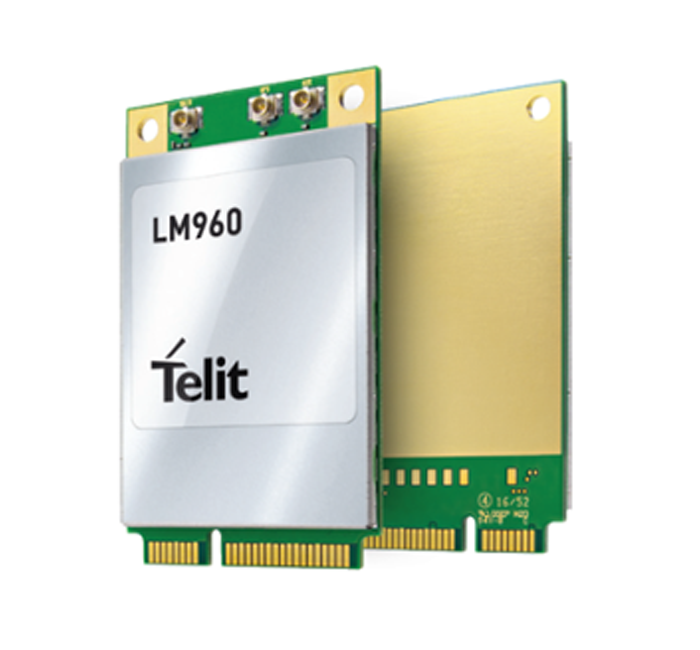 Specs Highlights: * World's first mPCIe form factor to support LTE cat.18 * Support global 23 LTE Frequency bands * LTE peak download speed up to 1Gbps * Dual SIM Single Standby * Full GNSS support: GPS, GLONASS, Galileo, Beidou * Chipset: Qualcomm Snapdragon X20 modem * Linux and Windows driver support * 4 x 4 MIMO and 256 QAM * 5x Carrier Aggregation for increased data rates Check more details about Telit LM960 Specs, price, drivers, and buy Telit LM960 module here: https://www.4gltemall.com/telit-lm960-4g-lte-cat18-pcie-module.html
Specs Highlights: * World's first mPCIe form factor to support LTE cat.18 * Support global 23 LTE Frequency bands * LTE peak download speed up to 1Gbps * Dual SIM Single Standby * Full GNSS support: GPS, GLONASS, Galileo, Beidou * Chipset: Qualcomm Snapdragon X20 modem * Linux and Windows driver support * 4 x 4 MIMO and 256 QAM * 5x Carrier Aggregation for increased data rates Check more details about Telit LM960 Specs, price, drivers, and buy Telit LM960 module here: https://www.4gltemall.com/telit-lm960-4g-lte-cat18-pcie-module.html - Sierra Wireless AirPrime EM7565 (LTE Cat.12)
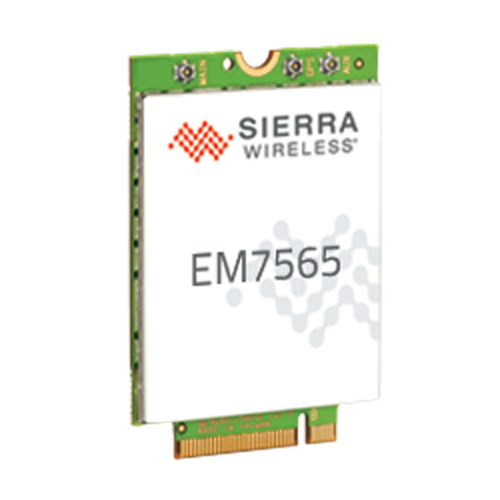 Specs Highlights: * LTE Advanced Pro Cat.12 Module * Chipset/Processor: Qualcomm MDM9250 * DL to 600Mbps/UL to 150Mbps * Supporting 24 worldwide LTE bands, including LTE-LAA and CBRS * Satellite Systems: Galileo, Glonass, GPS, Beidou * Planned Carrier AT&T, DoCoMo, Telstra, Verizon, Vodafone * Regulatory: CE, FCC, GCF, IC, NCC, PTCRB Check more details about Sierra AirPrime EM7565 Specs, price, drivers, and buy AirPrime EM7565 module here: https://www.4gltemall.com/sierra-wireless-airprime-em7565.html
Specs Highlights: * LTE Advanced Pro Cat.12 Module * Chipset/Processor: Qualcomm MDM9250 * DL to 600Mbps/UL to 150Mbps * Supporting 24 worldwide LTE bands, including LTE-LAA and CBRS * Satellite Systems: Galileo, Glonass, GPS, Beidou * Planned Carrier AT&T, DoCoMo, Telstra, Verizon, Vodafone * Regulatory: CE, FCC, GCF, IC, NCC, PTCRB Check more details about Sierra AirPrime EM7565 Specs, price, drivers, and buy AirPrime EM7565 module here: https://www.4gltemall.com/sierra-wireless-airprime-em7565.html - Sierra Wireless AirPrime EM7511 (LTE Cat.12)
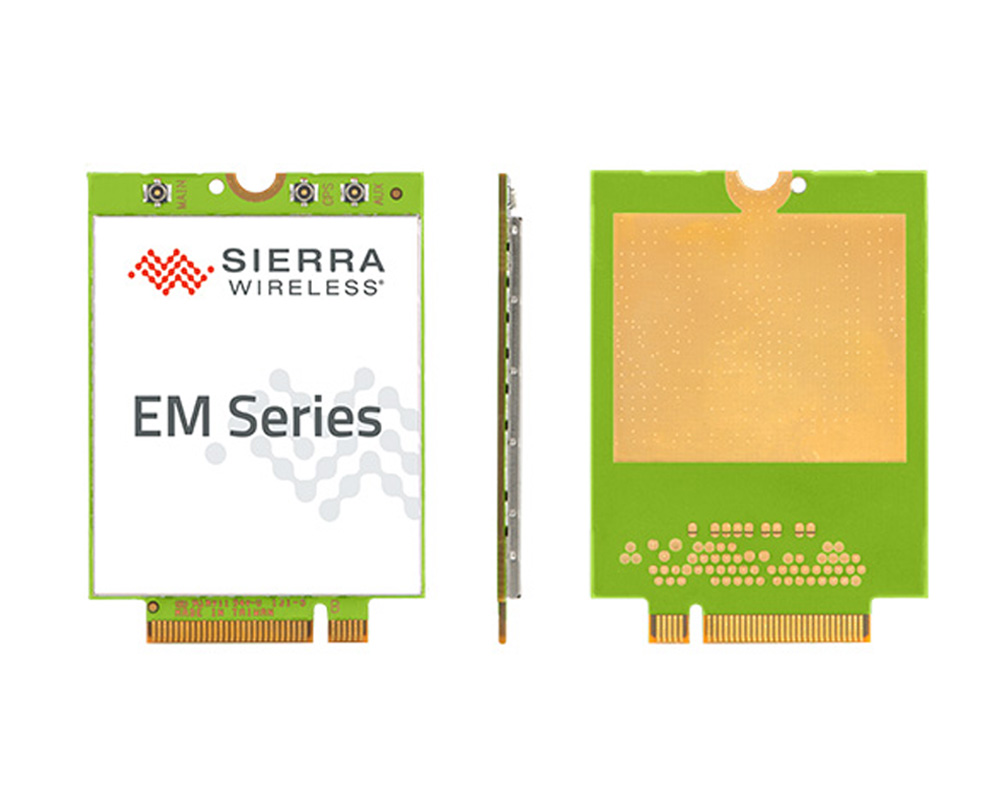 Specs Highlights: * Very similar to AirPrime EM7565 * LTE Advanced Pro Cat.12 Module * Form factor: M.2 * Chipset/Platform: Qualcomm * DL to 600Mbps/UL to 150Mbps * Supporting 24 worldwide LTE bands, including LTE-LAA and CBRS * Control Options: APIs, AT Commands * Firmware over-the-air (FOTA) * GPS, GLONASS, BeiDou, and Galileo satellite systems supported Check more details about Sierra AirPrime EM7511 Specs, price, drivers, and buy AirPrime EM7511 module here: https://www.4gltemall.com/sierra-wireless-airprime-em7511.html
Specs Highlights: * Very similar to AirPrime EM7565 * LTE Advanced Pro Cat.12 Module * Form factor: M.2 * Chipset/Platform: Qualcomm * DL to 600Mbps/UL to 150Mbps * Supporting 24 worldwide LTE bands, including LTE-LAA and CBRS * Control Options: APIs, AT Commands * Firmware over-the-air (FOTA) * GPS, GLONASS, BeiDou, and Galileo satellite systems supported Check more details about Sierra AirPrime EM7511 Specs, price, drivers, and buy AirPrime EM7511 module here: https://www.4gltemall.com/sierra-wireless-airprime-em7511.html - Telit LM940 (LTE Cat.11)
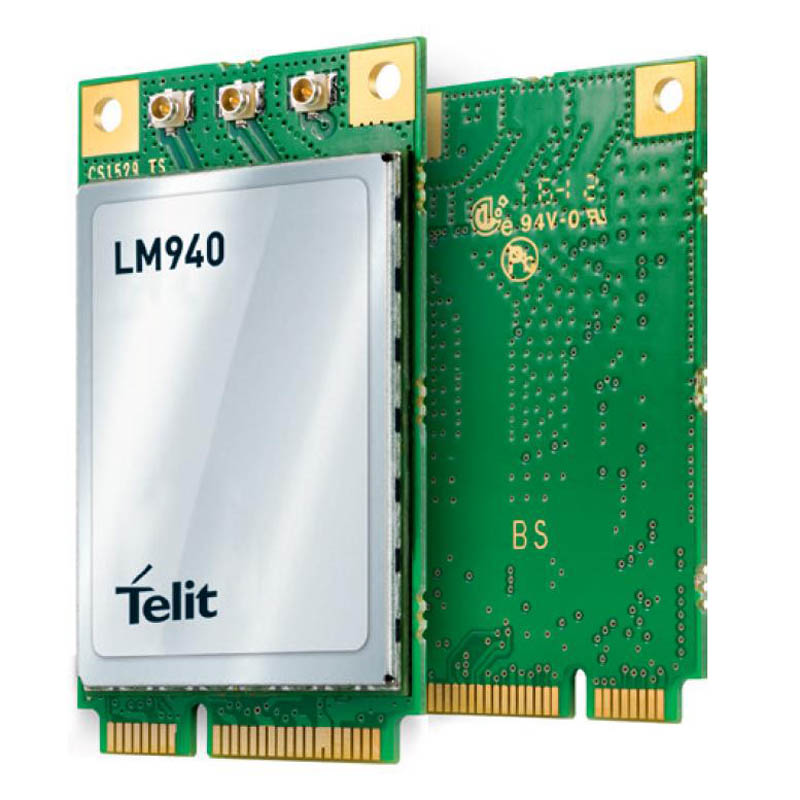 Specs Highlights: * Category: LTE Cat.11 Module * Form Factor: PCI Express Mini Card Type (mPCIe) * Chipset: Qualcomm MDM9240 * LTE data rates: DL 600Mbps(w/3x CA DL, 256QAM) and UL 75Mbps * Full GNSS support: GPS, GLONASS, Galileo, Beidou * Carrier Approvals: AT&T, Sprint, Verizon Check more details about Telit LM940 Specs, price, drivers, and buy Telit LM940 module here: https://www.4gltemall.com/telit-lm940-lte-cat-11-gps-pcie-module.html
Specs Highlights: * Category: LTE Cat.11 Module * Form Factor: PCI Express Mini Card Type (mPCIe) * Chipset: Qualcomm MDM9240 * LTE data rates: DL 600Mbps(w/3x CA DL, 256QAM) and UL 75Mbps * Full GNSS support: GPS, GLONASS, Galileo, Beidou * Carrier Approvals: AT&T, Sprint, Verizon Check more details about Telit LM940 Specs, price, drivers, and buy Telit LM940 module here: https://www.4gltemall.com/telit-lm940-lte-cat-11-gps-pcie-module.html - Telit LN940 (LTE Cat.11 and Cat.9)
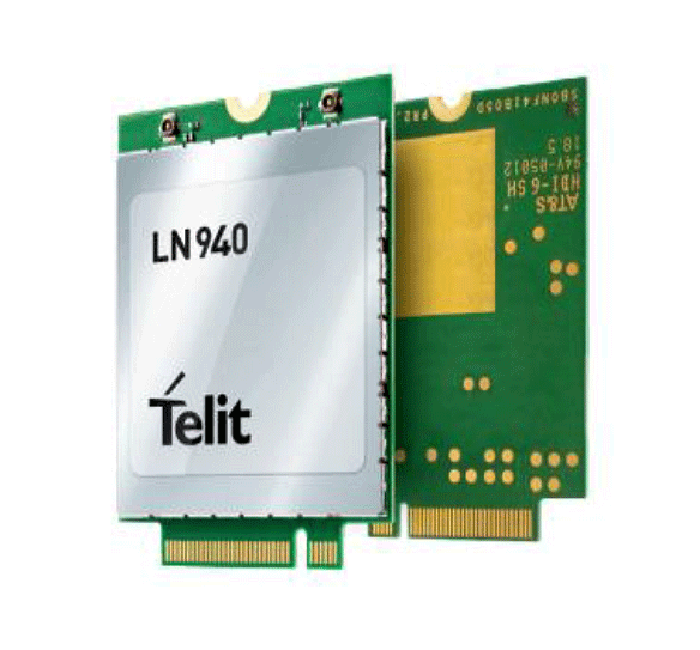 Specs Highlights: * Two variant models: Telit LN940A9 and LN940A11 * 42mm M.2 (NGFF) single-sided data card * LTE Category 11 LTE DL 600Mbps UL50Mbps * LTE Category 9 LTE DL 450Mbps UL50Mbps * HSPA+ Rel. 8: DL/UL up to 42/11.5 Mbps * Quad-constellation integrated GNSS * Linux and Windows driver support * Carrier Aggregation, 2 x 2 MIMO and 256 QAM Check more details about Telit LN940 Specs, price, drivers, and buy Telit LN940 module here: https://www.4gltemall.com/telit-ln940-lte-cat9-11-m-2-data-card.html
Specs Highlights: * Two variant models: Telit LN940A9 and LN940A11 * 42mm M.2 (NGFF) single-sided data card * LTE Category 11 LTE DL 600Mbps UL50Mbps * LTE Category 9 LTE DL 450Mbps UL50Mbps * HSPA+ Rel. 8: DL/UL up to 42/11.5 Mbps * Quad-constellation integrated GNSS * Linux and Windows driver support * Carrier Aggregation, 2 x 2 MIMO and 256 QAM Check more details about Telit LN940 Specs, price, drivers, and buy Telit LN940 module here: https://www.4gltemall.com/telit-ln940-lte-cat9-11-m-2-data-card.html -
Huawei E5885 VS Netgear Nighthawk M1
In past years, 4G mobile routers with SIM card slot are becoming more and more well-known because they are of small size and can be easily taken in a handbag or in a pocket. Nowadays, more and more people would prefer the 4G router with Ethernet port, which would provide one more option for internet connection. What’s the more, the manufacturers usually configure the 4G routers with Ethernet with large battery pack, which makes the 4G pocket router work like a power bank to charge other devices. Huawei was the first manufacturer to release its 4G mobile router with Ethernet port, and now the Netgear follows. Huawei E5885 is the latest 4G mobile hotspot with Ethernet and Netgear present the Nighthawk M1 as its first 4G router with Ethernet. Someone may ask: what’s the difference between Huawei E5885 and Nighthawk M1? Which one is better? You may find the answers after reading this article.
Huawei E5885 VS Nighthawk M1 Appearance and Interface
Actually, before the Huawei E5885 was presented, Huawei had released a few mobile hotspots with Ethernet port such as E5151, E5730, E5351, E5770, E5771, which are a series mobile router with Ethernet. It has been proved this series of MiFi hotspots are very popular in the end-users. Now the upgraded Huawei E5885 is available with more advanced features and cool design. On the front of E5885, the upper part is LED screen while the lower part is leather material with Huawei logo. The touch feels in hand is very much better than the predecessor models. And it’s much thicker than the mobile hotspot E5770 and E5771. The power button, WPS, and the Interfaces are located at the top edge side of the body. The Ethernet port and USB ports are covered by a square cap, which you have to open it to see. The back cover could be removed, however, like the Huawei E5786, the battery is built-in and non-changeable. The Mirco SIM card slot and SD storage card slot are available with the reset button.
Unlike its predecessor of Netgear mobile router, Nighthawk M1 also has a thick body. On the front, there is a round screen, like E5885, it’s also not a touchscreen. There are battery and data transmission indicators around the screen. The Netgear logo and carrier logo are on the side of the screen. The power button is on the top side and the Ethernet & USB ports are located on the opposite side. The difference is Netgear Nighthawk M1 has two connectors for external antenna, which is missing in Huawei E5885. And the USB input ports for Nighthawk M1 and the Huawei E5885 are different. The Nighthawk M1 back cover could be removed and unlike Huawei E5885, the battery could also be removed for exchange. The Netgear M1 also use Micro SIM card size, but no slot for SD card.
Netgear Nighthawk M1 VS Huawei E5885 Specs and Variant models
Since the network frequency bands are different in different countries or areas, the Nighthawk M1 has around three variant models: Telstra Nighthawk M1, AT&T Nighthawk M1, and another variant model for Europe market. The Huawei E5885 has only one variant model: Huawei E5885Ls-93a. It seems to be a global version, however, in China, the Huawei E5885LS-93a in China has only one language (Chinese) available. In other countries such as Saudi Arabia or Romania, we found they have many languages available, at least with the English language. From the appearance, we can see the Nighthawk M1 and Huawei E5885 are very different in the design. To know more difference, let’s have a look at the detail specs of the Nighthawk M1 and E5885:
Model Netgear Nighthawk M1 Huawei E5885 Product type LTE Mobile Hotspot LTE Mobile Hotspot Category LTE Cat.16 LTE Cat.6 Chipset Qualcomm MDM9x50 Hisilicon LTE Cat6 chipset Data rates DL 1Gbps/UL 100Mbps DL 300Mbps/UL 50Mbps Supported 4G LTE frequency bands -- Telstra Nighthawk: Band 1/3/7/8/28 -- AT&T Nighthawk: Band 1/2/3/4/5/7/12/29/30/66 Huawei E5885Ls-93a: Band 1/2/3/4/5/7/8/19/20/28 * TDD-LTE: Band 38/40/41/42 WLAN 802.11a/b/g/n/ac, dual-band 2.4GHz & 5GHz 802.11a/b/g/n/ac, dual-band 2.4GHz & 5GHz Max support users 20 users 32 users MIMO 4 X 4 MIMO 2 X 2 MIMO Connector for external antenna Two, TS-9 jacks No connector Buy Antenna Netgear Nighthawk M1 Antenna N/A App management Netgear Aircard APP Huawei Hilink APP 3.0 SIM type Micro SIM Micro SIM Battery Removable, 5040 mAh Non-removable, 6400mAh Dimensions 105.5 x 105.5 x 20.35 mm 112.00 x 69.20 x 23.00mm Ethernet Port One Ethernet Port for LAN On port for WAN/LAN port(RJ-45) Datasheet download AT&T Nighthawk M1 Datasheet Huawei E5885 Datasheet User Manual AT&T Nighthawk M1 Manual Huawei E5885 Manual Other features 4 band CA, JumpBoost Power bank, CA, NFC Reviews Netgear Nighthawk M1 AT&T Review Huawei E5885 Review Price 459.00USD 249.00USD Summary
From the specs, we can see the Nighthawk M1 Router is more advanced with the support of LTE Cat.16, which could achieve downloads speeds up to 1Gigabit/s and upload speed to 100Mbps. The speed is much faster than that of Huawei E5885. The LTE Advanced Pro technologies would provide amazing surfing experience. The Nighthawk M1 variant models could be used globally after unlocking. However, there is maybe limitation due to network incompatibility. The Huawei E5885LS-93a seems to be more open for global travel. It covers the main frequency bands in all the areas.
The Nighthawk M1 could support maximum users up to 20 while Huawei E5885 mobile hotspot supports up to 32 users. The Ethernet port in Huawei E5885 is for WAN and LAN but the port in Netgear M1 is only for LAN, which may not be as good as expected for the Ethernet. The Huawei E5885 has a large battery capacity of 6400mAh while Netgear MR100 has around 5040 mAh battery; however, the removable battery of Nighthawk M1 seems better than Huawei E5885 built-in battery. The missing of antenna connector in Huawei E5885 is also criticized while the Netgear M1 has two connectors for external 4G antenna, which is very useful if using the device in weak signal areas. Per the feedback from the users of Nighthawk M1, it’s the best 4G router with Ethernet. However, the advanced Nighthawk M1 price is more expensive, so if you would buy Nighthawk M1, the price is an important concern.

